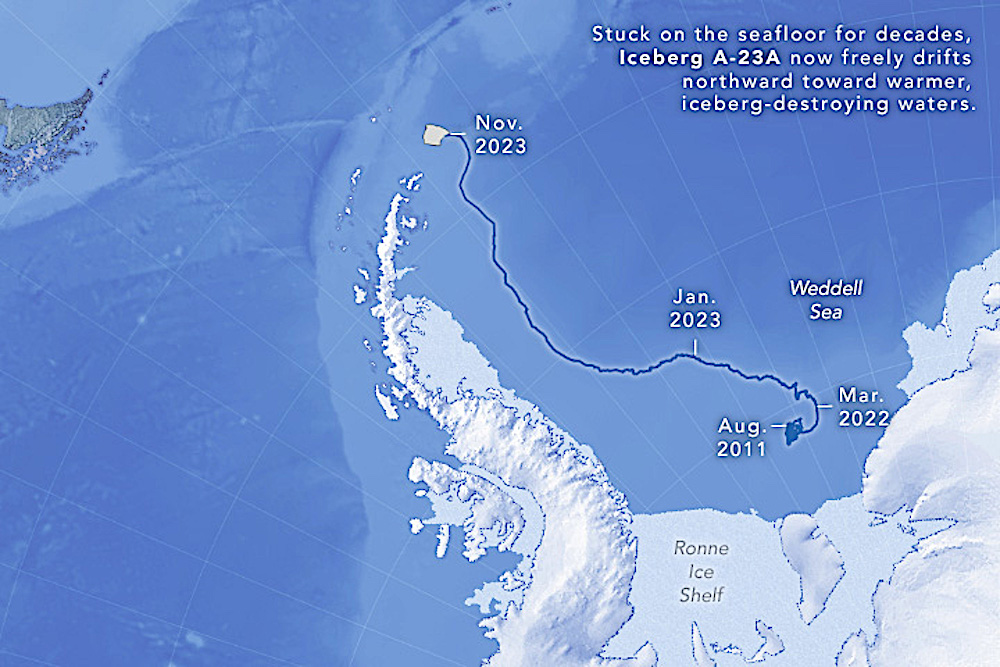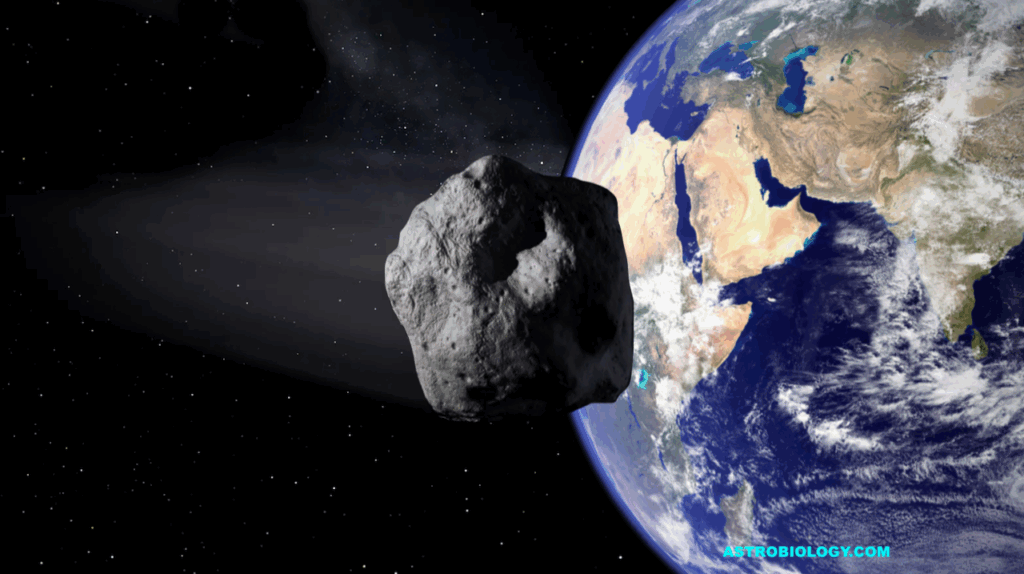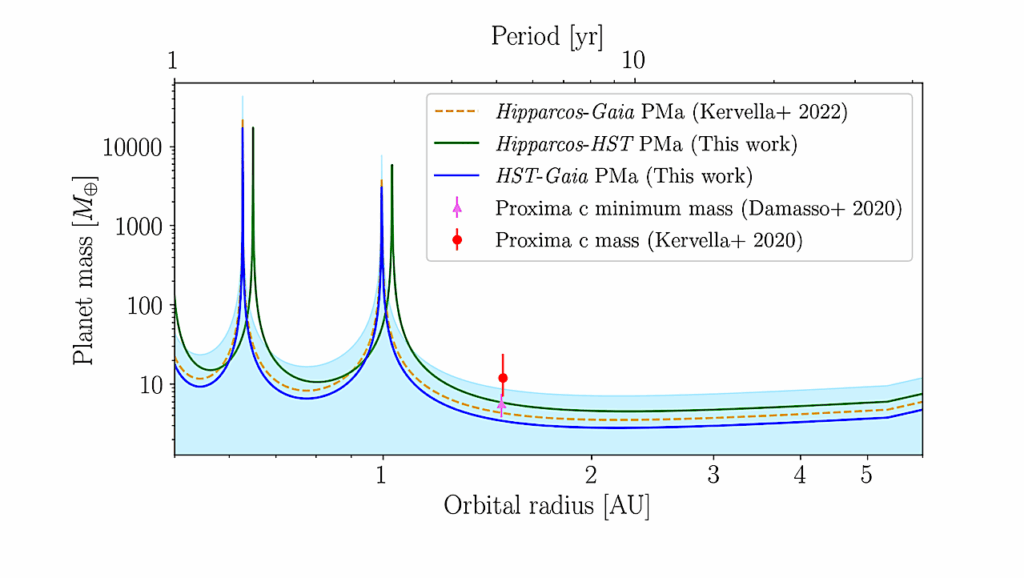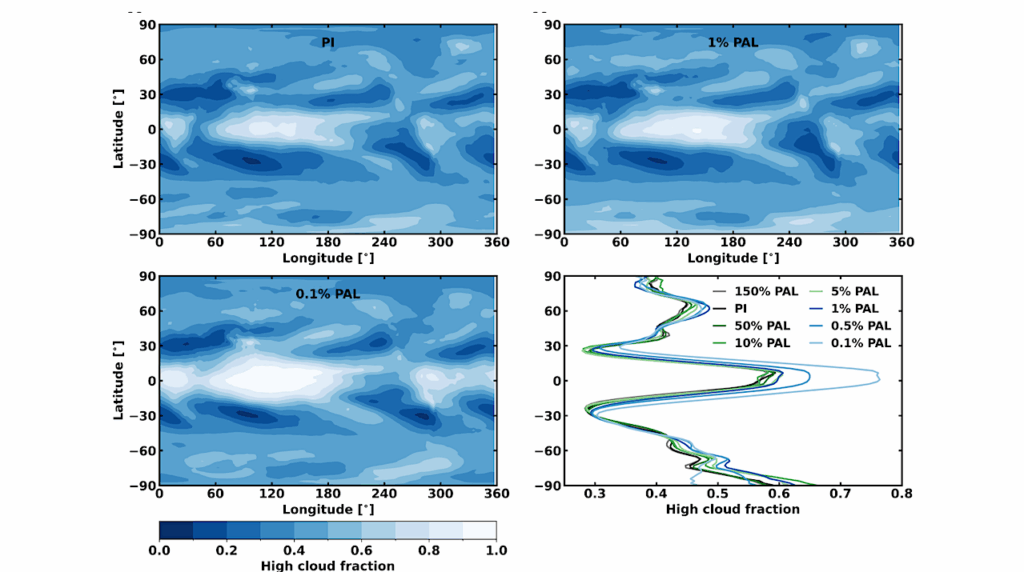Monitoring Ice World Surfaces From Orbit: Antarctic Iceberg Sails Away

Editor’s note: Prime targets for Astrobiology missions in the coming decades include ice-covered ocean worlds in the outer solar system such as Europa, Enceladus, Ganymede, Callisto, Mimas, Titan and others. Understanding how Earth’s cryosphere responds to global weather patterns and long term geological activity should help us understand what is going on elsewhere in our solar system – and beyond.
For decades, Iceberg A-23A sat quietly, out of sight, off the coast of Antarctica. But the berg has been attracting notice in November 2023 as it drifts northward across the Weddell Sea—closer to shipping lanes, islands inhabited by wildlife, and warmer iceberg-destroying waters of the Southern Ocean.
On November 28, 2023, the MODIS (Moderate Resolution Imaging Spectroradiometer) on NASA’s Terra satellite acquired this image of the iceberg, 37 years after it broke from the Filchner Ice Shelf (east of the larger Ronne Ice Shelf). On this day, the berg drifted near several islands at the tip of the Antarctic Peninsula, about 1,700 kilometers (1,000 miles) from its birthplace.
The iceberg broke from the Filchner shelf in 1986 and soon became stuck on the seafloor of the southern Weddell Sea. For decades, the berg stayed stayed anchored about 200 kilometers (120 miles) from the ice shelf. The iceberg’s path, charted in data available from the U.S. National Ice Center since 2011, is visible in the map above. Notice the berg’s initial blob-like trajectory at it was buffeted by currents and winds. Despite these forces, A-23A essentially remained in the same place.

The berg became unstuck from the seafloor in the early 2020s, likely due to melting from below the waterline. By March 2023 it floated freely alongside other sizable bergs. Since then, it has spent the warmer months of the year riding the Weddell Sea Gyre, an ocean current that spins clockwise and pushes icebergs in the western Weddell Sea to the north.
As of November 24, 2023, the iceberg measured about 4,300 square kilometers (1,700 square miles), according to the U.S. National Ice Center. That makes it the largest of any iceberg currently adrift in the world’s oceans. Larger bergs have come and gone. For example, icebergs A-68 and A-76 briefly took the largest iceberg title in 2017 and 2021, respectively, before they fractured.
Past icebergs in this area, such as A-68A and A-76A, eventually escaped the clockwise circulation of the gyre and entered the Drake Passage—a turbulent body of water between South America’s Cape Horn and Antarctica’s South Shetland Islands. From there, they typically move north toward the South Atlantic and quickly melt in the region’s warmer waters.
NASA Earth Observatory images by Wanmei Liang, using MODIS data from NASA EOSDIS LANCE and GIBS/Worldview and data from the Antarctic Iceberg Tracking Database. Worldview animation by Karin Kirk, NASA/JPL-Caltech using MODIS imagery from NASA’s Aqua and Terra satellites. Story by Kathryn Hansen with image interpretation by Christopher Shuman, NASA/UMBC.
Astrobiology








